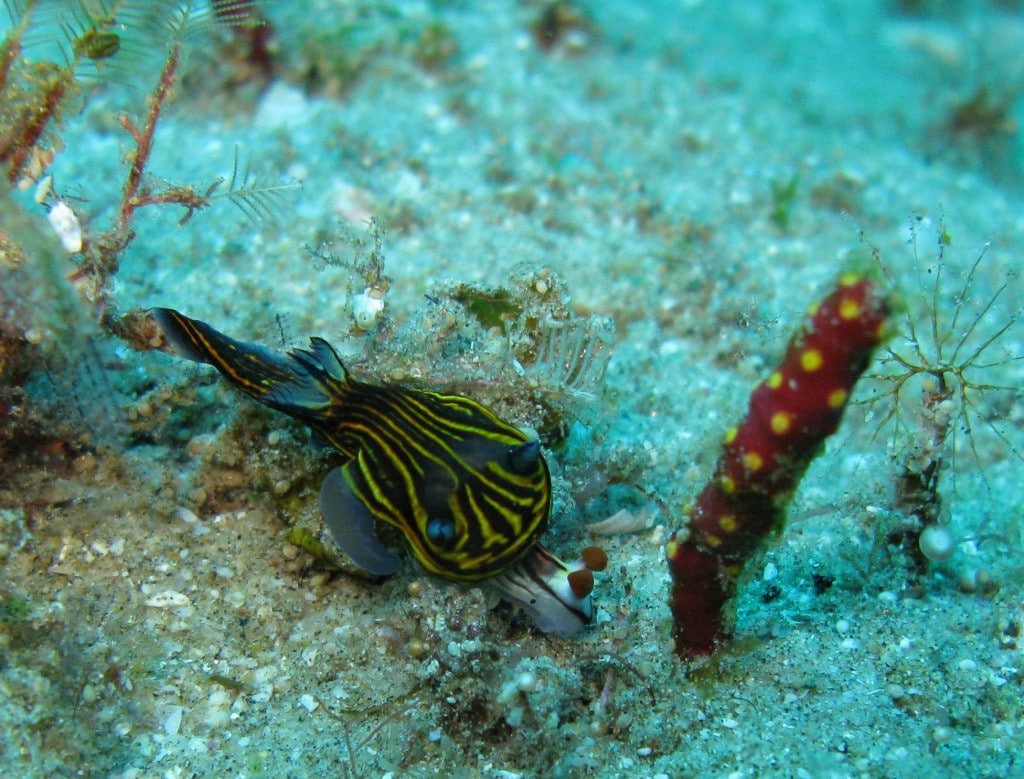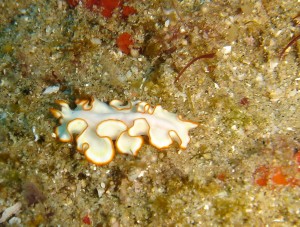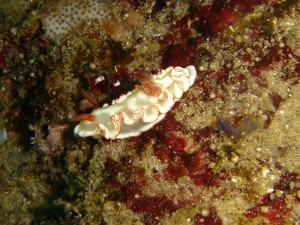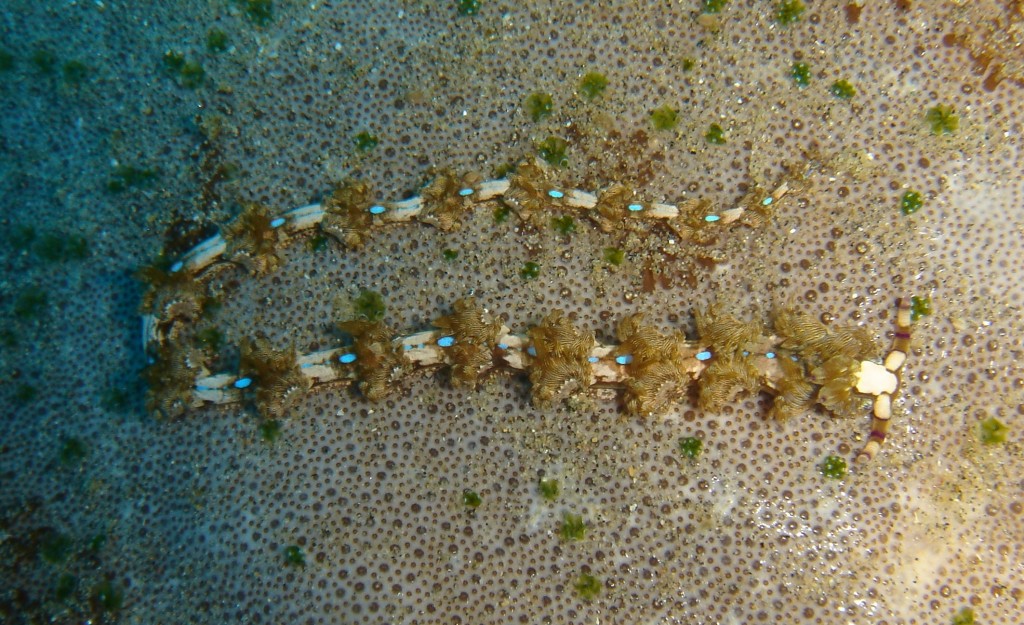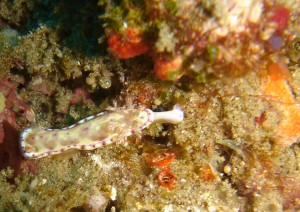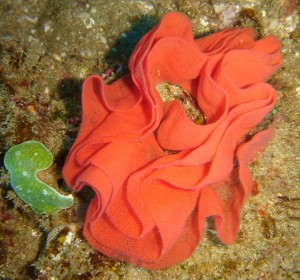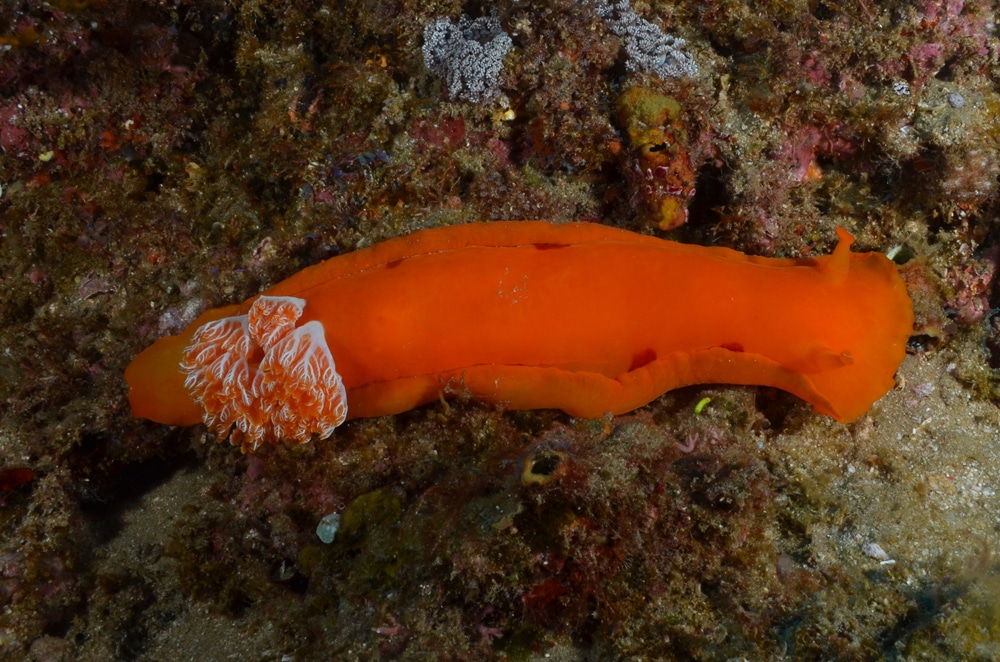News
Nudibranchs and the fabulous Spanish Dancer (Hexabranchus sanguineus)
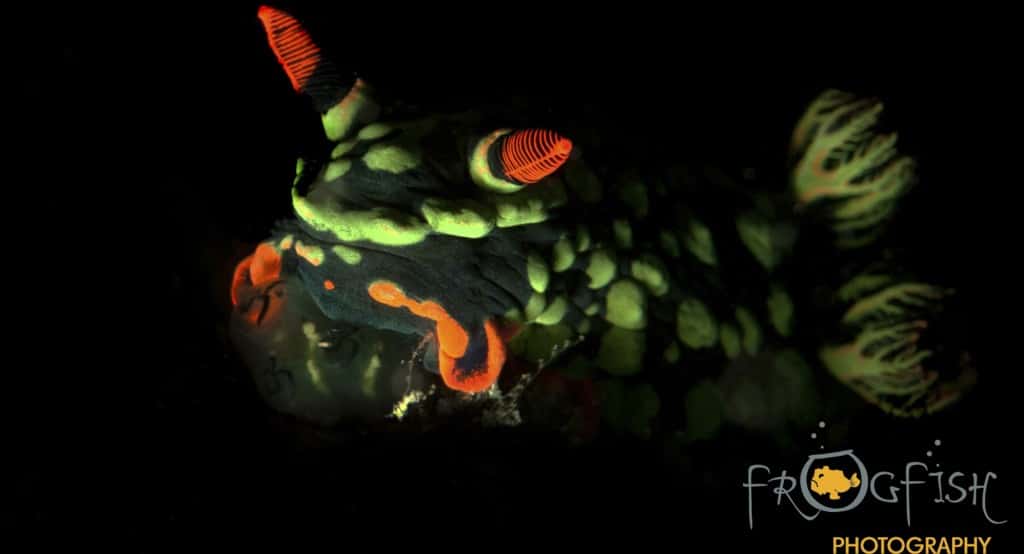
Every good Dive Master/photographer has a problem. They must look after their clients while still taking pictures. They have no time to vary the depth of focus, no time to change camera settings; their dive clients must always come first. Colin Ogden of Amoray Diving at Sodwana Bay solved the problem by shooting nudibranchs, and his study of these amazing creatures has become a passion. I spent a spellbinding evening with him learning about them.
Nudibranchs come in brilliant colours, with fabulous markings, and they can vary in size from 1mm to 600mm. They are primarily carnivores and will eat hydroids and other species of nudibranchs but most of them feed on sponges; all of which are animals. A few will eat algae or seaweed. They feed where food is available so they frequent areas where coral growth is limited; even the cold Northern European waters harbour these colourful sea slugs and nudibranch hunting has become a global passion.
Nudibranch means exposed gills. Hexabranchus, for example, has six sets of exposed gills. All but two nudibranchs are called by their Latin names. The scientific community frowns on them being given common names so the study of these creatures is not for the faint-hearted.
Most of them breath using the exposed bunches of gills on their backs, and their sensual organs are contained in a pair of rhinophores, on the front of their heads. These look like horns. All are hermaphrodite, with both male and female sex organs, which are always on the right hand side, below the neck. These can be expelled to accommodate a large meal, and then re-ingested. All of them are poisonous to fish, and a single nudibranch can kill an entire aquarium full of fish if it becomes stressed and lets off a toxin. This occasionally benefits the palatable flatworm. He sometimes mimics the shape and rhinophores of the poisonous nudibranch, escaping predators and protecting himself.
There is even a species that farms algae in its gills. It is long and thin and has many sets of gills or cerata which he uses to collect algae. You will sometimes find it spread out along the top of the reef on a sunny day, cerata exposed to catch the sun so the algae will grow faster.
The spectacular Spanish Dancer (Hexabranchus sanguineus) is one of the very few nudibranchs that goes by its common name. They grow up to 600mm long, so are clearly identifiable. “They are nocturnal animals in our waters, so we rarely spot them in Sodwana Bay. However, we found two on the point of mating on Seven Mile in broad daylight. They lined up neck to neck, and then they exchanged sperm, fertilising each other. After five or six days each lays a long egg ribbon in a continuous circle, and you can see these on the reef looking like soft rosettes.”
They are normally pink, reddish or orange. These ribbons are preyed upon by other nudibranchs of the Favourinus family and the survivors hatch into tiny nudibranchs that look nothing like their imposing parents.
Other species lay egg ribbons that hatch into tiny veligers, which are a larval stage, and they can float around in the ocean, following currents for months on end. When they sense that there is a food source, they will descend onto the reef and metamorphose into small nudibranchs. The study of these creatures is still in its infancy, although some were described as early as the 1700s, but they are fascinating creatures, and there are still many unnamed and quite rare species in our waters. Once you know what you are looking for, you can find them almost everywhere.
Words: Jill Holloway
Pictures and technical data: Colin Ogden, Amoray Diving
Copyright Ocean Spirit 2017 – www.osdiving.com
News
Stay Longer for Less at Temple Point, Kenya with Dive Worldwide
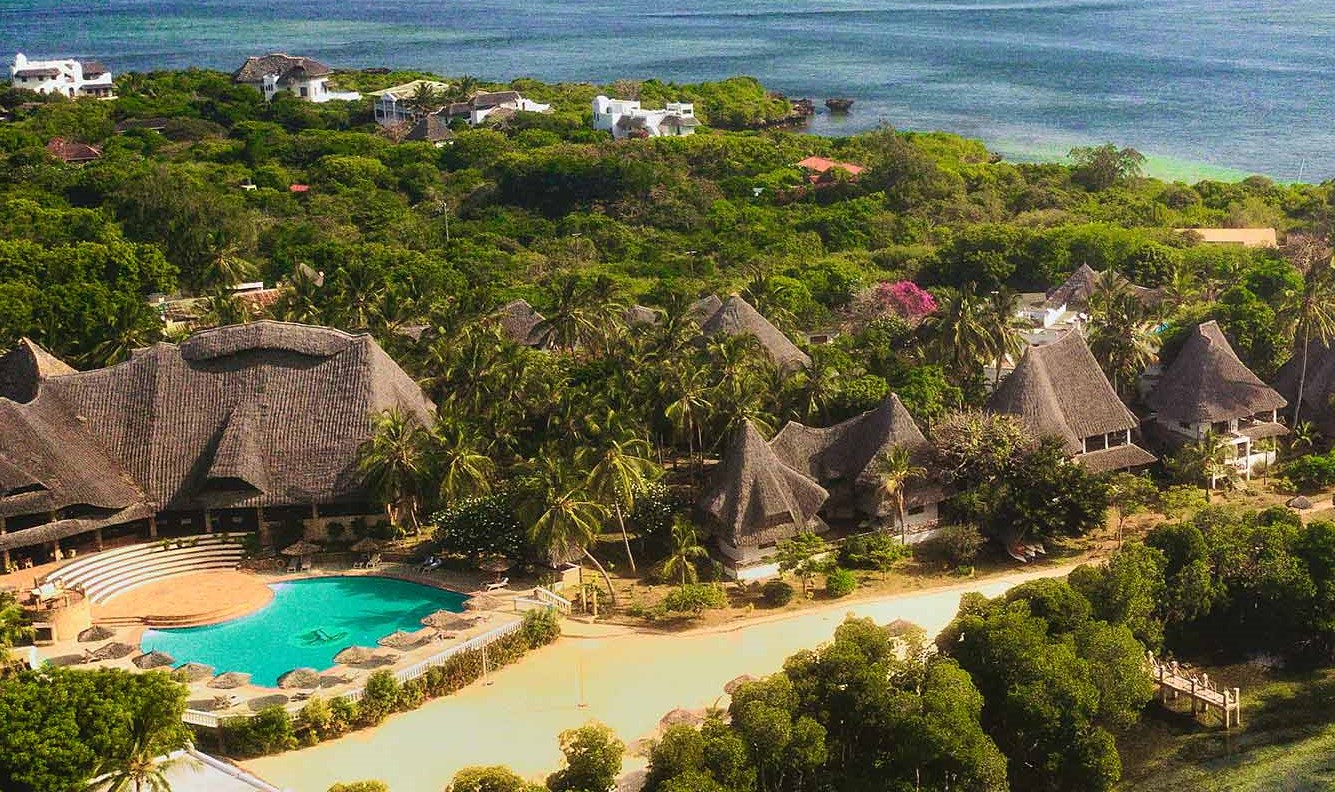
Dive Worldwide has recently introduced Kenya to its portfolio of dive destinations, making it a new must-visit for divers. The company has chosen Temple Point Resort, located in Watamu, a small town on Kenya’s Indian Ocean Coast. The resort embodies the spirit of Kenya, with thatched roof buildings and bright white interiors, complemented with local art. The Creek Deluxe rooms enjoy a creek view and sunset vistas, whilst Boutique Garden rooms offer peace nestled in lush greenery.
An abundance of activities such as golf, stand up paddleboarding and kite surfing await those looking for action; while those in search of rejuvenation may partake in a range of yoga classes, or indulge in the spa. Spend evenings dining poolside dining or lazing in hammocks suspended over the creek; there is no detail missed at Temple Point.
The waters surrounding Temple Point Resort are bustling with life, however, there is also an opportunity to explore on dry land. Tsavo National Park is close enough for a day safari, allowing guests to double up on the wildlife experiences Kenya has to offer, from elephants to whale sharks.
Suggested Dive Itinerary: Dive and Discover Kenya
Embark on an adventure to one of Africa’s finest marine parks, Watamu, the first of its kind in the continent. Created in 1968, Watamu offers excellent diving and snorkelling for those of all experience levels. Lively coral reefs and the surrounding waters are home to over 1,000 species of fish, devil rays, mantas, whale sharks, dolphins and turtles.
DEAL: Stay 12 nights for the price of 10 at Temple Point Resort
Price: Dive and Discover Kenya now costs £2295pp, saving £150 per person. Including international flights from the UK, 12 nights’ B&B (for the price of 10), transfers, 5 days, 10 dive pack, tanks and weights. Based on travel in September ONLY. https://www.diveworldwide.com/trip-ideas/dive-discover-kenya#details
For more information visit: diveworldwide.com or call 01962 302 087
News
Dive Worldwide Announces Bite-Back as its Charity of the Year

Over the next 12 months, specialist scuba holiday company Dive Worldwide will be supporting Bite-Back Shark & Marine Conservation with donations collected from client bookings to any one of its stunning dive destinations around the world. The independently-owned operator expects to raise £3000 for the UK charity.
Manager at Dive Worldwide, Phil North, said: “We’re especially excited to work with Bite-Back and support its intelligent, creative and results-driven campaigns to end the UK trade in shark products and prompt a change in attitudes to the ocean’s most maligned inhabitant.”
Bite-Back is running campaigns to hold the media to account on the way it reports shark news along with a brand new nationwide education programme. Last year the charity was credited for spearheading a UK ban on the import and export of shark fins.
Campaign director at Bite-Back, Graham Buckingham, said: “We’re enormously grateful to Dive Worldwide for choosing to support Bite-Back. The company’s commitment to conservation helps set it apart from other tour operators and we’re certain its clients admire and respect that policy. For us, the affiliation is huge and helps us look to the future with confidence we can deliver against key conservation programmes.”
To launch the fundraising initiative, Phil North presented Graham Buckingham with a cheque for £1,000.
Visit Dive Worldwide to discover its diverse range of international scuba adventures and visit Bite-Back to learn more about the charity’s campaigns.
MORE INFORMATION
Call Graham Buckingham on 07810 454 266 or email graham@bite-back.com
-

 News3 months ago
News3 months agoHone your underwater photography skills with Alphamarine Photography at Red Sea Diving Safari in March
-

 News3 months ago
News3 months agoCapturing Critters in Lembeh Underwater Photography Workshop 2024: Event Roundup
-

 Marine Life & Conservation Blogs3 months ago
Marine Life & Conservation Blogs3 months agoCreature Feature: Swell Sharks
-

 Blogs2 months ago
Blogs2 months agoMurex Resorts: Passport to Paradise!
-

 Blogs2 months ago
Blogs2 months agoDiver Discovering Whale Skeletons Beneath Ice Judged World’s Best Underwater Photograph
-

 Gear Reviews3 weeks ago
Gear Reviews3 weeks agoGEAR REVIEW – Revolutionising Diving Comfort: The Sharkskin T2 Chillproof Suit
-

 Marine Life & Conservation2 months ago
Marine Life & Conservation2 months agoSave the Manatee Club launches brand new webcams at Silver Springs State Park, Florida
-

 Gear Reviews3 months ago
Gear Reviews3 months agoGear Review: Oceanic+ Dive Housing for iPhone


